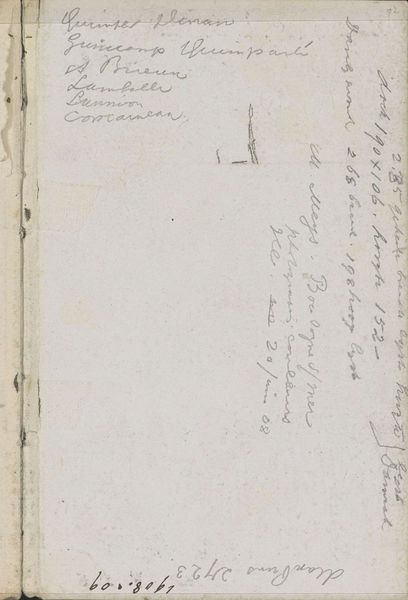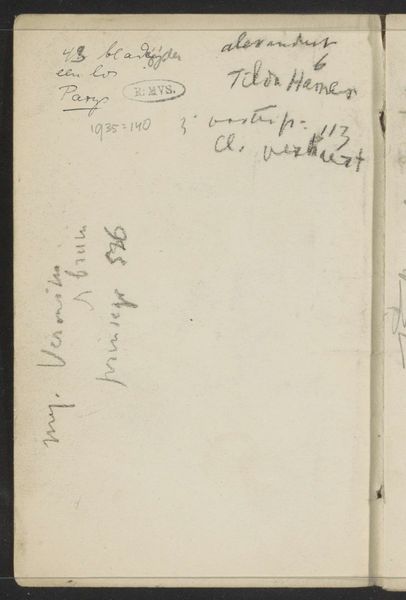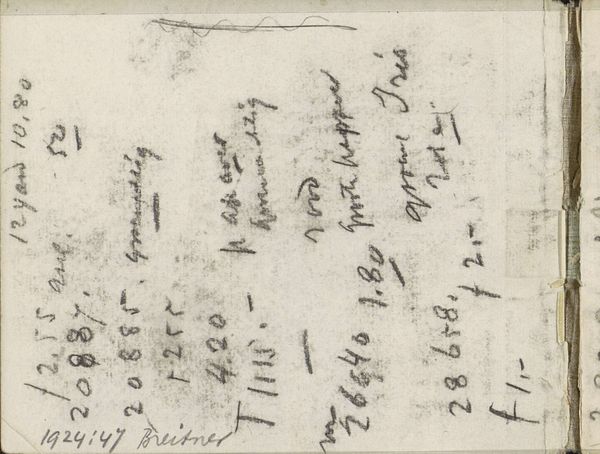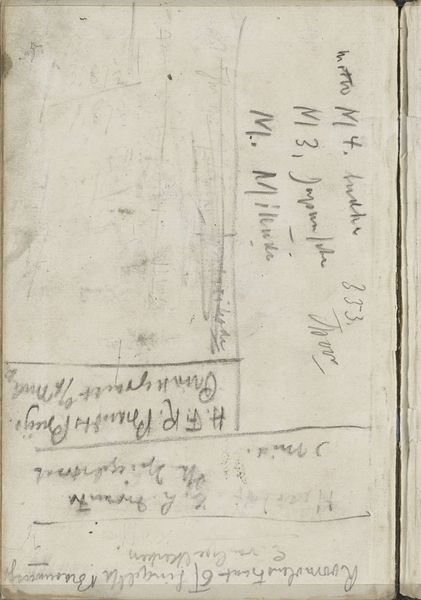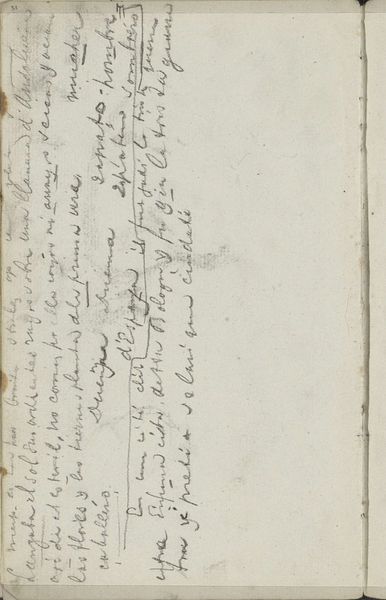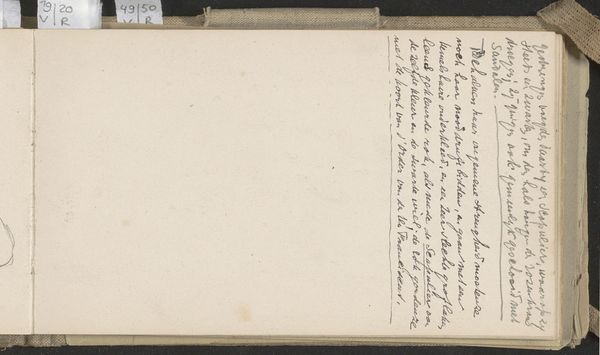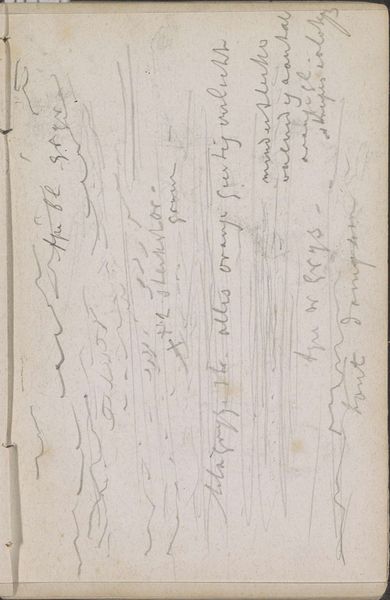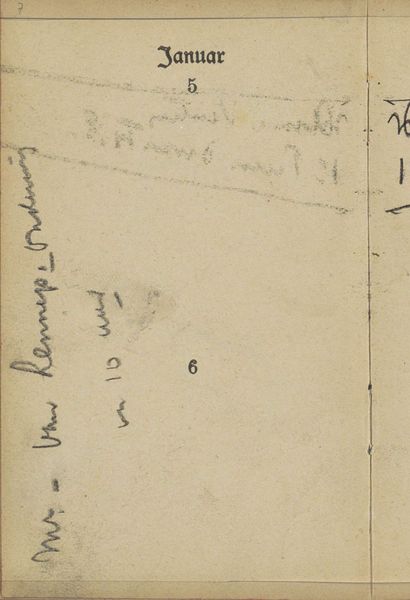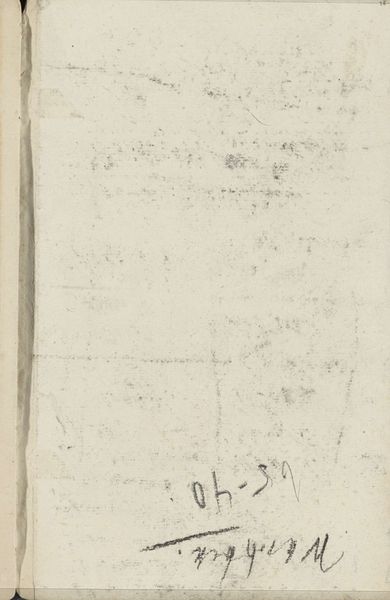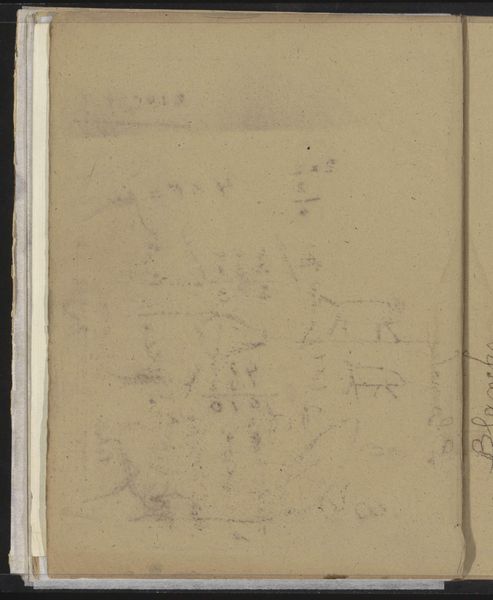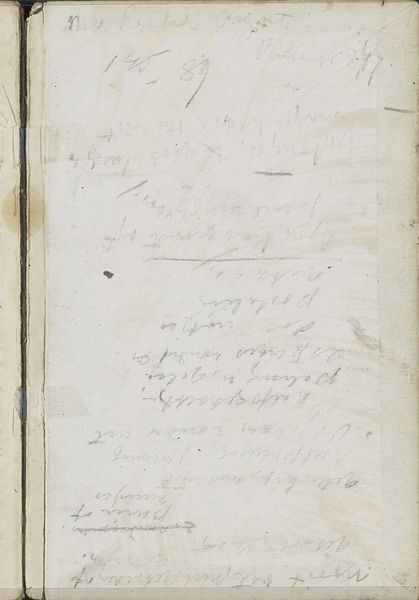
drawing, paper, ink
#
drawing
#
sketch book
#
paper
#
ink
#
line
#
modernism
#
calligraphy
Copyright: Rijks Museum: Open Domain
Curator: Here we have Gerrit Willem Dijsselhof’s “Notities,” dating roughly from 1876 to 1924. It’s currently housed here at the Rijksmuseum. Editor: It's stark, almost minimalist in its presentation. The open notebook, the contrasting pages, one with sparse sketches and the other filled with what seems to be script or notations… it feels very intimate, like a glimpse into the artist's working process. Curator: Dijsselhof was working within a period deeply engaged with social and political upheaval, with movements like the rise of socialism and early feminist ideologies brewing. This work, though appearing simple, must be viewed within this complex period of shifting power dynamics. Consider how his choice of materials, ink on paper, speaks to accessibility and perhaps even a rejection of traditional, bourgeois artistic values. Editor: Absolutely. And looking closer, you see the way the ink bleeds into the paper. It isn't just about recording an idea; the very substance—the ink, the paper, their interaction—conveys something. Also the writing itself looks almost like calligraphy – a kind of valuing of work, recording labor in real time. I find it hard to make out: there is the address Henri A. Rozengrache 234 – does this suggest that the sketches themselves are plans for sculptures or architectural details, tied up with the business of making and constructing. Curator: Indeed, by emphasizing the materials, Dijsselhof also comments on the nature of creative labor. There's an intimacy and immediacy here; the artwork invites the viewer to participate in an intersectional dialogue questioning dominant paradigms in both art and life. We see not only an individual act of creation but its potential role in broader socio-political transformations. Editor: For me, the value lies in seeing how ideas take shape through material exploration. We appreciate not just the ‘what’ but the ‘how’ and ‘why’ of art production, acknowledging its deep connection to a social and material world. I come away seeing his work as a commentary on art making and commerce, and also artistic thought as continuous production, captured in time on a paper page. Curator: I’m drawn to think about Dijsselhof’s attempt to engage critically and personally with the world he lived in through an art both of political consciousness and emotional authenticity. Editor: A really generative exchange, linking our readings in quite unique ways, demonstrating the real power of looking to historical details and social context as a point of origin.
Comments
No comments
Be the first to comment and join the conversation on the ultimate creative platform.

